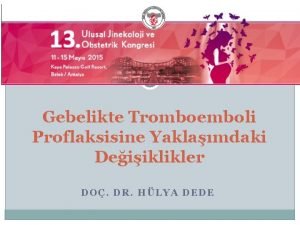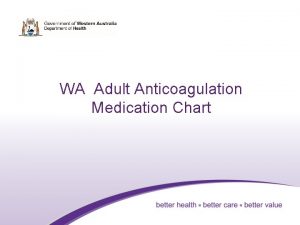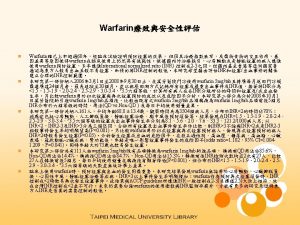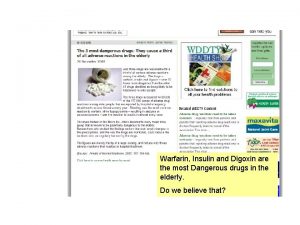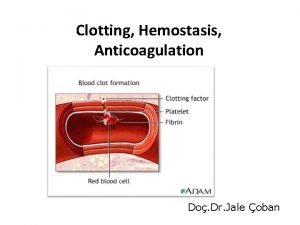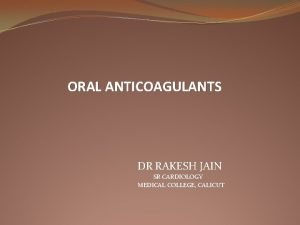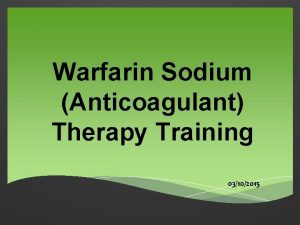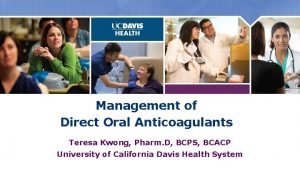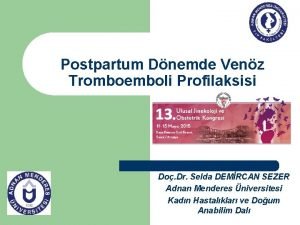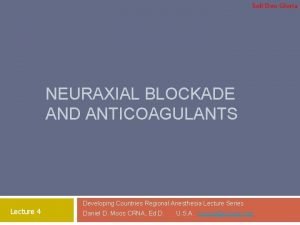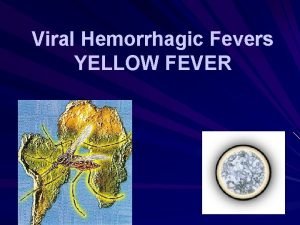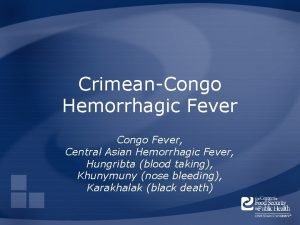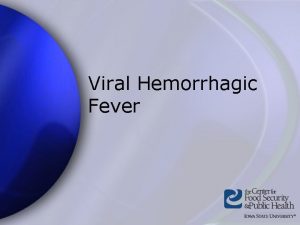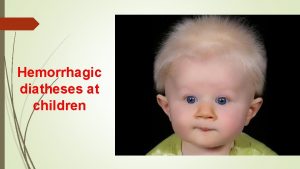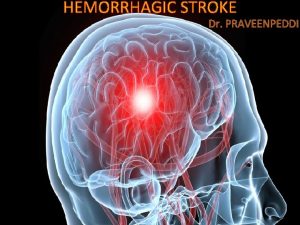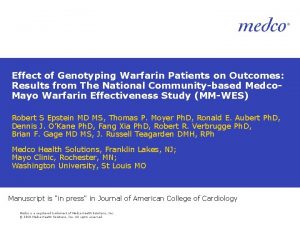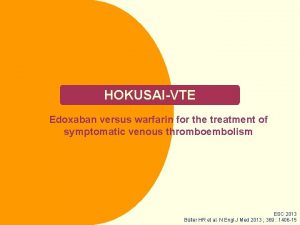Outcomes Associated With Resuming Warfarin Treatment After Hemorrhagic













- Slides: 13

Outcomes Associated With Resuming Warfarin Treatment After Hemorrhagic Stroke or Traumatic Intracranial Hemorrhage in Patients With Atrial Fibrillation JAMA Internal Medicine 2017; 177(4): 563 -570. DOI: 10. 1001/jamainternmed. 2016. 9369 1 Tu, Hui-Tzu Nov. 07, 2018

INTRODUCTION 2 Treatment with oral anticoagulants (OACs) reduces the incidence of thromboembolic events and death among patients with atrial fibrillation (AF). Given the close association of advanced age, AF, and subsequent increased risk for stroke, anticoagulation treatment is the mainstay of reducing the risk for cardioembolic stroke and allcause mortality among these patients. Thus, in contemporary guidelines, anticoagulation is indicated for most patients with AF and at least 1 additional risk factor based on the CHA 2 DS 2 -VASc score. However, the treatment may come at the cost of an increased risk for bleeding, including bleeding in the brain, which is the most feared clinical situation in patients receiving antithrombotic therapy. In patients with AF who encounter a warfarin-associated intracranial hemorrhage (ICH), the risk for 30 -day mortality approaches 50%. Patients with AF who survive an ICH event are still at risk for thromboembolism, but this risk has to be balanced against the treatment-related risk for recurrent intracranial bleeding. To investigate the prognosis associated with resuming warfarin treatment stratified by the type of ICH (hemorrhagic stroke or traumatic ICH).

METHODS 3 Database the Danish National Patient Register --which includes admission and discharge dates and the discharge diagnoses for hospital admissions the Danish National Prescription Registry --which holds information on purchase date, Chemical classification code, and package size the Danish Civil Registration System-- which includes Informationon sex, date of birth, vital status and emigration status Outcomes Ischemic stroke or systemic embolism Recurrent ICH (composite outcome of all types of bleeding in the brain) Stroke (composite of ischemic stroke or intracerebral hemorrhage) All-cause mortality

FLOWCHART 4 Patients were followed up in the National Patient Registry from 14 days after hospital discharge (index date) to ensure ascertained outcomes were not immediately related to the inclusion event. End of follow-up: defined as a maximum of 1 year

METHODS 5 Statistical Analysis Crude 1 -year incidence rates: the number of events divided by 100 person-years Adjusted Cox proportional hazards regression analyses were conducted to investigate relative risk between the treatment groups, with no warfarin treatment being the reference. To assess whether the analyses were confounded by indication (ie, selective prescribing due to complications of the index event and other comorbidities), we performed propensity matched (nonusers to users in a 2: 1 ratio) analyses in each stratum of hemorrhagic stroke and traumatic ICH. Expert opinion suggests a maximum of 10 weeks before resuming warfarin treatment inpatients with AF at high risk for stroke if no evidence suggests cerebral amyloid angiopathy. The treatment exposure groups were subsequently defined within this period analyzed according to those who claimed a warfarin prescription (warfarin treatment group) and those who did not (no treatment group), with follow-up starting at week 10.

RESULTS 6

RESULTS 7

RESULTS 8

RESULTS 9 > > < > > >

RESULTS 10 Reference—no resumption Crude—blue box Adjusted—orange box

RESULTS 11 Reference—no resumption Crude—blue box Adjusted—orange box

CONCLUSIONS 12 Hemorrhagic stroke: resumption of warfarin treatment lower rate of ischemic stroke or SE, mortality higher rate of recurrent ICH Traumatic ICH: lower rate of ischemic stroke or SE, recurrent ICH and mortality The relative risk for recurrent ICH associated with resumption of warfarin treatment was higher among patients with a hemorrhagic stroke than observed among patients with a traumatic ICH event in this cohort. Spontaneous hemorrhagic stroke and traumainduced ICH confer different prognoses in patients with AF, and recommendations on resumption of warfarin treatment should consider this difference.

LIMITATIONS 13 The data are based on administrative databases primarily used for reimbursement, and thus not all clinically relevant and important variables were available. We had no information on intensity of warfarin treatment and could not access the location and volume of the hematoma. We did not have access to imaging data in this study; thus, the analyses did not include information on specific subtypes of ICH.


